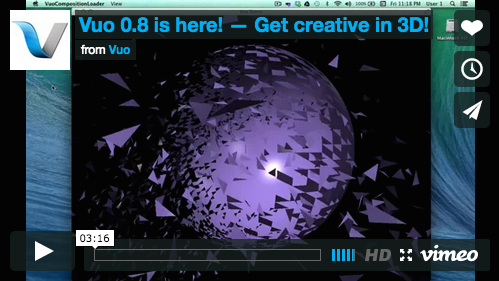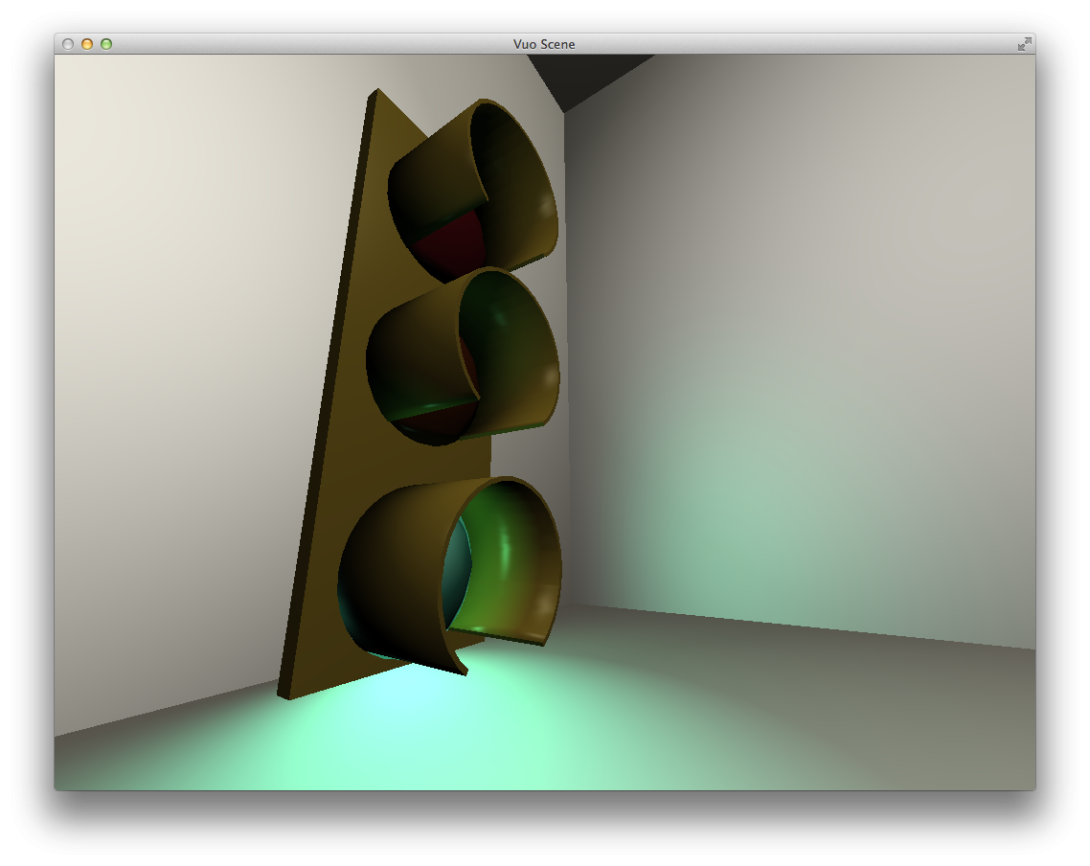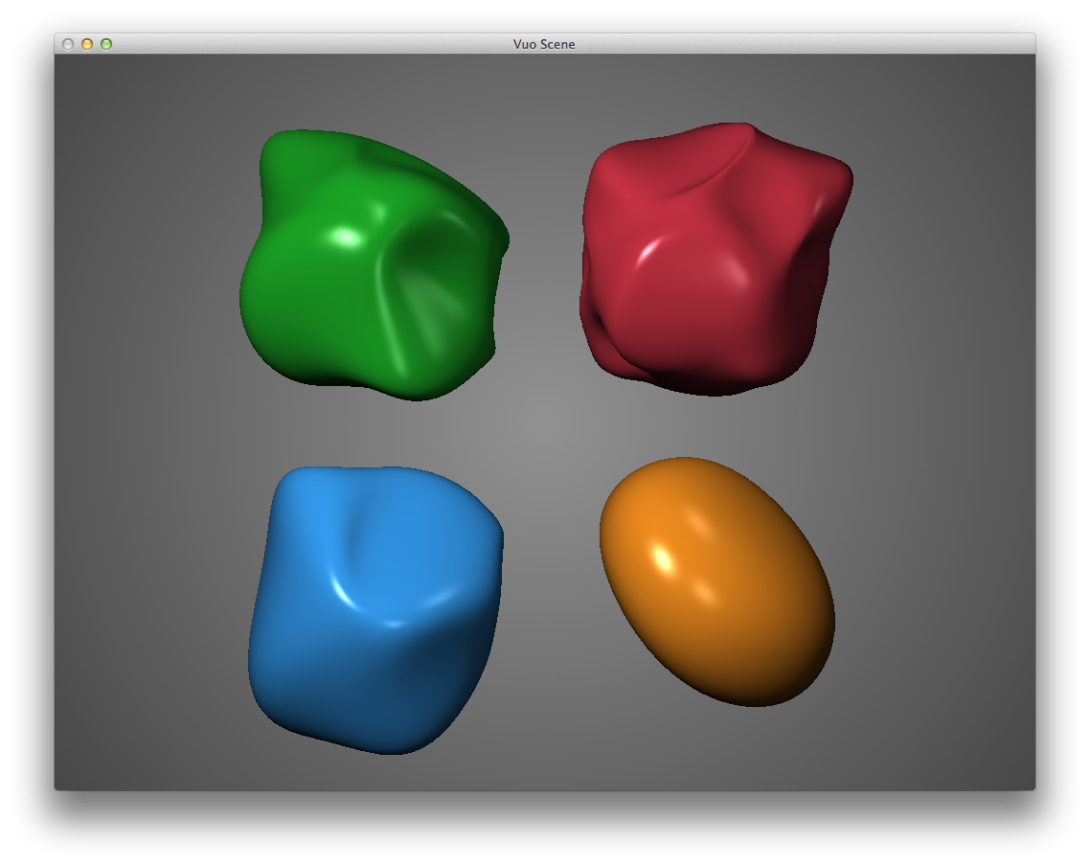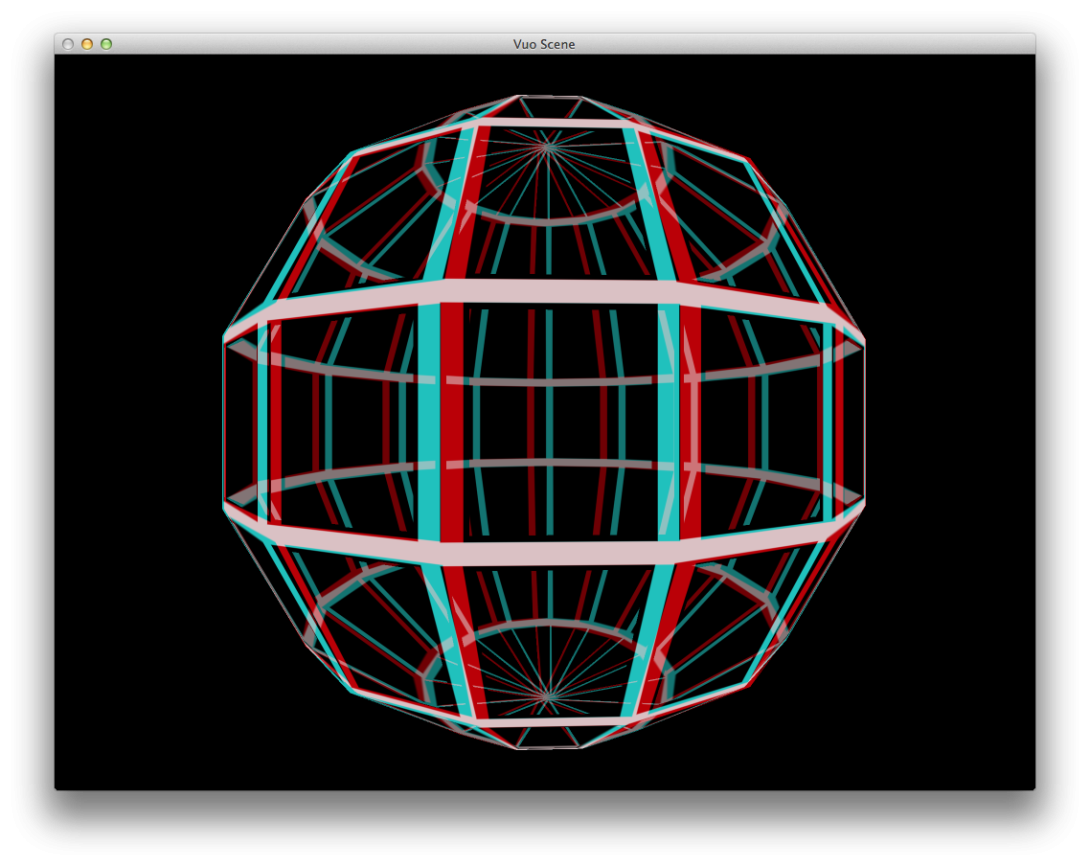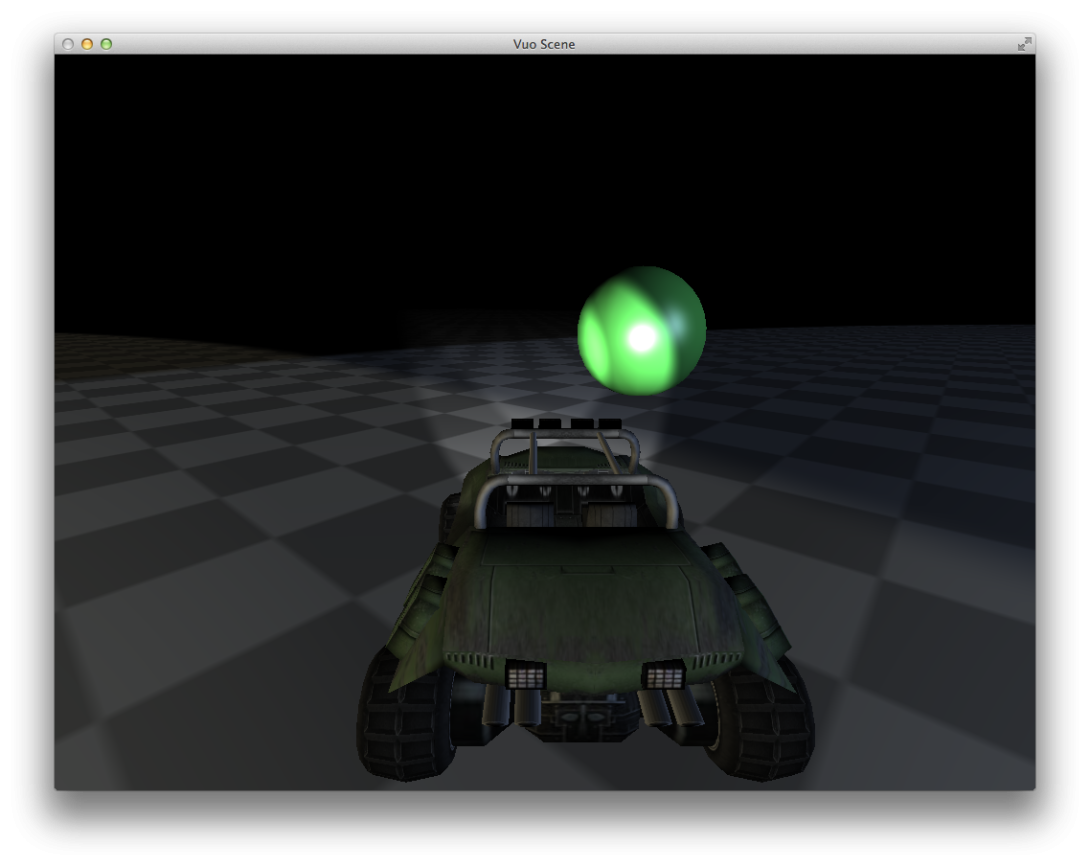Check out our video on Vimeo or YouTube!
Vuo 0.8 is our biggest release yet, with 44 new nodes! We included 2 user-submitted feature requests — a barcode reader, and the ability to make windows full-screen on startup and change other window parameters. This release also includes our first premium node sets — the ability to render stereoscopic 3D images, and image warping for projection onto planetariums and other surfaces.
Vuo 0.8 comes with an array of new 3D object filters that let you explode, ripple, bend, and twist your objects — and a whole lot more. We’ve also added new shader options, including the ability to change shaders on imported scenes. You now have the ability to arrange 3D objects in a grid, normalize them, and calculate their boundaries.
This release also comes with 34 new example compositions! Several of these demonstrate the new object filters, and a complete list can be found in the release notes.
When working in 2D, Vuo now has the ability to arrange layers in a grid, more easily combine layers, and rotate images!
This release comes with a new Cocoa API, making it significantly easier to integrate Vuo with Mac applications. Check out the API documentation for more details.
If you’re familiar with Kineme’s plugins and apps for Apple’s Quartz Composer, and you’re wondering how Vuo compares, we’ve included a list of Kineme functionality that’s included in Vuo 0.8 at the end of this newsletter.
Vuo now has a composition gallery where you can easily upload and share your work with the community — check out what’s being posted! As always, we look forward to seeing what you create!
— Jaymie
Team Vuo
For those of you familiar with Kineme’s Quartz Composer plugins and apps, Vuo now has equivalent functionality to:
- Kineme AudioTools:
- Playing audio from files
- Rendering waveform images from files and devices
- Getting information about input and output devices
- Getting information about audio files
- Kineme DataTools:
- Easily make arrays (without having to write JavaScript)
- Kineme Freeboard Patch:
- Receive arbitrary typing
- Receive presses/releases of modifier keys
- Kineme GLTools:
- Move and rotate the camera
- Make the camera look at a specific point
- Use both perspective and orthographic cameras
- Change the camera’s field of view
- Render points, lines, and triangles
- Render a mathematical expression as points or line segments
- Retrieve the depth buffer output
- Generate and render a subdivided grid
- Render objects as wireframes
- Render objects with flat or smooth shading
- Scale a 3D object
- Render stereoscopic images from a pair of asymmetric-frustum cameras
- Kineme KinectTools:
- Receive the color and depth images from a Kinect
- Kineme3D:
- Load and render a wide variety of 3D mesh files
- Create 3D meshes using parametric equations
- Create 3D meshes from lists of points and lines
- Create grid meshes
- Center and normalize meshes
- Apply hierarchical 3D transformations to meshes
- Warp meshes using gravitational deformation
- Bend meshes
- Explode meshes
- Add noise to meshes
- Ripple meshes
- Twist meshes
- KinemeCore:
- Protection from losing your work if the running composition crashes
- Kineme MIDI Tools:
- Output MIDI note and controller messages
- Easily receive the latest MIDI note
- Kineme PBMesh:
- Warp images using Paul Bourke’s projection mesh “.data” files
- Kineme QuartzBuilder:
- Easily export compositions as standalone apps
- Control the app’s window position, size, title, resizable status, and aspect ratio lock
- Make the app fullscreen on launch
- Select specific screens to use in fullscreen mode
- Kineme VideoTools:
- Play a wide variety of movie formats, without using QuickTime
